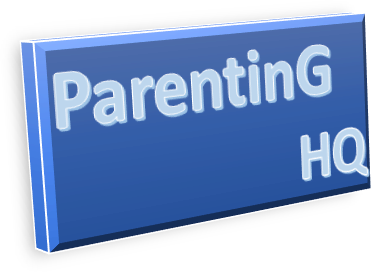I never knew there was anything called attachment parenting when I got first time pregnant. I did not think much about raising before I gave birth. I baby sat as a teenager and played with other babies and kids, and it seemed simple enough as I was not the main care giver for the child. Everything changed when I gave birth to my first child! He changed me, to a better mom.
My first born was very intense, constantly nursing and wanted to be held always. While friend who have birth to a baby girl about 2 weeks earlier was sleeping sound her baby, I was awake trying to figure out what is wrong with my son. Why he did not sleep in his well decorated nursery with all comfort, just right light and warmth of temperature. I had seen in movies, how they put baby to sleep and I did the same. Place the baby in to safe crib in his own room, tuck him in, kiss him good night and dim the light. There! It was simple enough I thought.
But, my son obviously did not see those movies nor cared for sleeping like that. Many early nights, I stayed awake holding him in comfy recliner breast feeding chair. He slept fine as long as I held him but trying putting on crib (no matter all the suggestions of people, experts and websites I tried), it did not work. I thought it was parenting style and I felt so low as a new mom who simply did not know any better.
Miracle came when I first read Fussy baby by Dr. Sears, as I held him and read through the book for next few weeks, it all made sense. My child, unlike many others was high need child. He needed more caring and attention. Once I got it, life became much easier for me, my son and my husband too. As I made sure, he too read the important paragraph about the high need child.
So, we came to do attachment parenting with our high need child, What is attachment parenting you may ask? According to Dr. sears, there are 7 baby B’s to follow as show below;
7 ATTACHMENT TOOLS: THE BABY B’S
1. Birth bonding
The way baby and parents get started with one another helps the early attachment unfold. The days and weeks after birth are a sensitive period in which mothers and babies are uniquely primed to want to be close to one another. A close attachment after birth and beyond allows the natural, biological attachment-promoting behaviors of the infant and the intuitive, biological, caregiving qualities of the mother to come together. Both members of this biological pair get off to the right start at a time when the infant is most needy and the mother is most ready to nurture, also see Bonding.
“What if something happens to prevent our immediate bonding?”
Sometimes medical complications keep you and your baby apart for a while, but then catch-up bonding is what happens, starting as soon as possible. When the concept of bonding was first delivered onto the parenting scene twenty years ago, some people got it out of balance. The concept of human bonding being an absolute “critical period” or a “now-or-never” relationship was never intended. Birth bonding is not like instant glue that cements the mother-child relationship together forever. Bonding is a series of steps in your lifelong growing together with your child. Immediate bonding simply gives the parent- infant relationship a headstart.
2. Breastfeeding
Breastfeeding is an exercise in babyreading. Breastfeeding helps you read your baby’s cues, her body language, which is the first step in getting to know your baby. Breastfeeding gives baby and mother a smart start in life. Breastmilk contains unique brain-building nutrients that cannot be manufactured or bought. Breastfeeding promotes the right chemistry between mother and baby by stimulating your body to produce prolactin and oxytocin, hormones that give your mothering a boost. If you are going back to work you can still breastfeed your baby by using breast pump to store breast milk.
3. Babywearing
A baby learns a lot in the arms of a busy caregiver. Carried babies fuss less and spend more time in the state of quiet alertness, the behavior state in which babies learn most about their environment. Babywearing improves the sensitivity of the parents. Because your baby is so close to you, you get to know baby better. Closeness promotes familiarity. (Click here for more information on babywearing products .)
4. Bedding close to baby
Wherever all family members get the best night’s sleep is the right arrangement for your individual family. Co-sleeping co-sleeping adds a nighttime touch that helps busy daytime parents reconnect with their infant at night. Since nighttime is scary time for little people, sleeping within close touching and nursing distance minimizes nighttime separation anxiety and helps baby learn that sleep is a pleasant state to enter and a fearless state to remain in.
5. Belief in the language value of your baby’s cry
A baby’s cry is a signal designed for the survival of the baby and the development of the parents. Responding sensitively to your baby’s cries builds trust. Babies trust that their caregivers will be responsive to their needs. Parents gradually learn to trust in their ability to appropriately meet their baby’s needs. This raises the parent-child communication level up a notch. Tiny babies cry to communicate, not to manipulate.
6. Beware of baby trainers
Attachment parenting teaches you how to be discerning of advice, especially those rigid and extreme parenting styles that teach you to watch a clock or a schedule instead of your baby; you know, the cry-it-out crowd. This “convenience” parenting is a short-term gain, but a long-term loss, and is not a wise investment. These more restrained styles of parenting create a distance between you and your baby and keep you from becoming an expert in your child.
7. Balance
In your zeal to give so much to your baby, it’s easy to neglect the needs of yourself and your marriage. As you will learn the key to putting balance in your parenting is being appropriately responsive to your baby – knowing when to say “yes” and when to say “no,” and having the wisdom to say “yes” to yourself when you need help.

